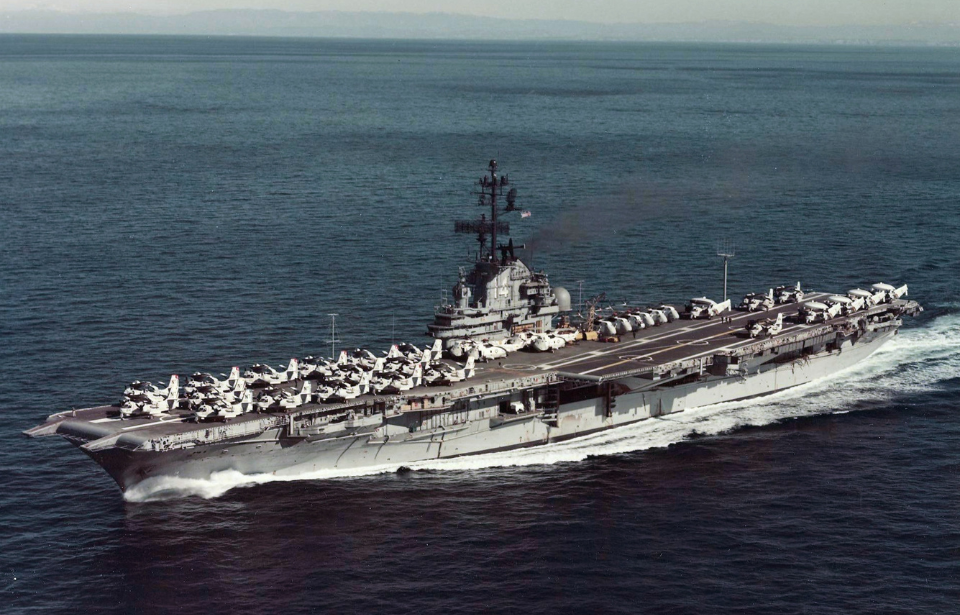The USS Ticonderoga (CV/CVA/CVS-14) was a World War II-era aircraft carrier built by the U.S. Navy. Named in recognition of the capture of Fort Ticonderoga during the American Revolution, it was the fourth ship to bear the name. Initially, the vessel was deployed to the Pacific Theater near the end of World War II, and later, it participated in the Vietnam War while also supporting NASA‘s Apollo 16 and 17 missions.
Construction of the USS Ticonderoga (CV-14)
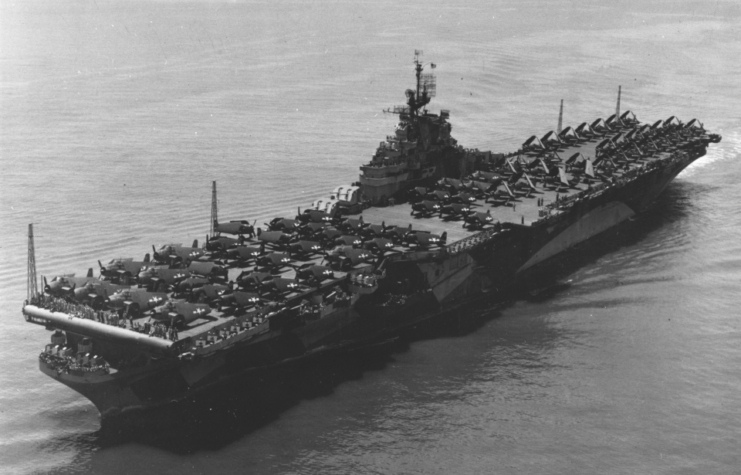
Construction of the USS Ticonderoga began on February 1, 1943, at Newport News, Virginia. Although initially she was going to be named Hancock after John Hancock, one of the founding fathers, a name change occurred during its construction. The vessel was officially commissioned on May 8, 1944, under the command of Capt. Dixie Kiefer.
After a two-month outfitting period in Norfolk, Virginia, the newly designated CV-14, Ticonderoga, set sail for the British West Indies to conduct training exercises with Air Group 80. Departing on July 16, the ship returned to Norfolk before continuing on to Panama. Following its transit through the Panama Canal, Ticonderoga proceeded to San Diego to take on supplies and host US Marine Corps defense and aviation units. The ship then traveled to Pearl Harbor for additional training and evaluation.
USS Ticonderoga (CV-14) specs
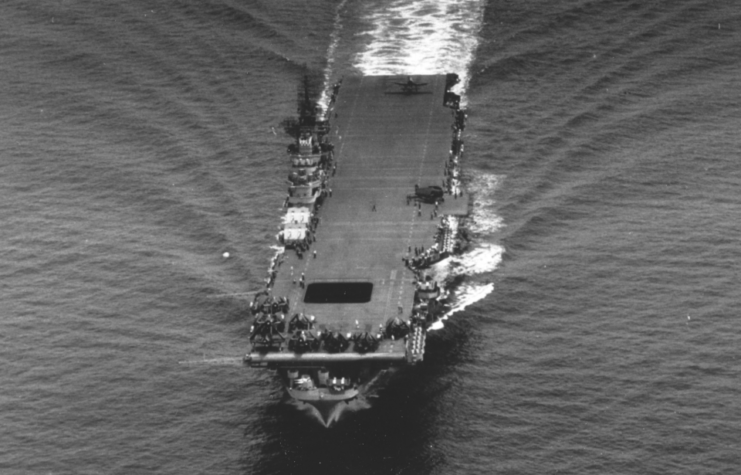
The USS Ticonderoga was 888 feet long, with a 93-foot beam and a draft of 29 feet. She weighed 27,500 tons, and was powered by eight boilers, four geared steam turbines and four shafts, which allowed the aircraft carrier to reach speeds of up to 33 knots (38 MPH).
In addition to her complement of 3,448 officers and men and 90-100 aircraft, Ticonderoga carried an array of armaments, including twelve 5-inch guns, thirty-two Bofors 40 mm guns and forty-six Oerlikon 20 mm cannons.
Entering the fight in the Pacific Theater
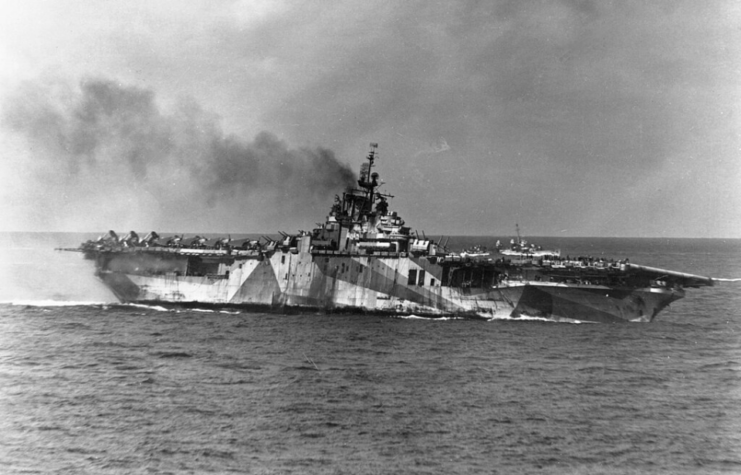
The USS Ticonderoga departed Pearl Harbor on October 18, 1944 for the Western Pacific, arriving off the coast of the Western Caroline Islands 11 days later. She was added to Task Force 38 (TF 38), part of Rear Adm. Frederick C. Sherman’s Task Group 38.3 (TG 38.3).
Ticonderoga‘s first action took place during the Philippines Campaign, providing air support as part of the Battle of Leyte. On November 5, she launched her first air strike, with her aircraft playing a role in the bombing and strafing of airfields at Zablan, Mandaluyong and Pasig; the sinking of the Japanese heavy cruiser Nachi; and the destruction of seven enemy aircraft, with an additional 23 damaged.
It was during this engagement that Ticonderoga first encountered Japanese kamikaze aircraft. While the USS Lexington (CV-16) took a hit from two, Ticonderoga made it out unscathed. Following this, she and TF 38 continued to launch strikes against enemy positions in the region, scoring a number of successes.
Falling victim to Japanese kamikaze strikes
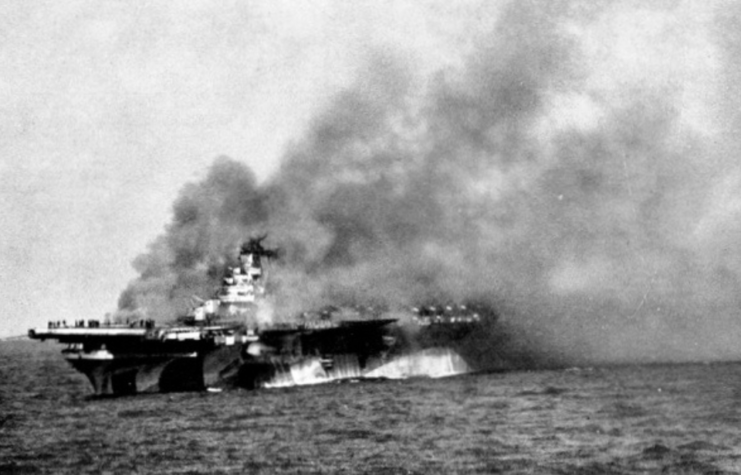
In January 1945, the USS Ticonderoga and Task Force 38 made their way through the South China Sea to conduct operations under Operation Gratitude. At the start of the raid, their aircraft were instrumental in downing four enemy bombers, and TF 38’s anti-shipping operations proved successful, taking out 44 Japanese vessels.
The task force then shifted its focus to the South Japanese Islands. While favorable weather conditions aided American flight operations, they also presented chances for Japanese forces. On the afternoon of January 21, two kamikaze planes appeared on the horizon. One struck the USS Langley (CVL-27), while the other crashed into the Ticonderoga’s flight deck. The bomb from the kamikaze exploded above the hangar deck on impact, inflicting extensive damage on the stored aircraft and resulting in numerous crew member fatalities.
The crew scrambled to keep the fires under control
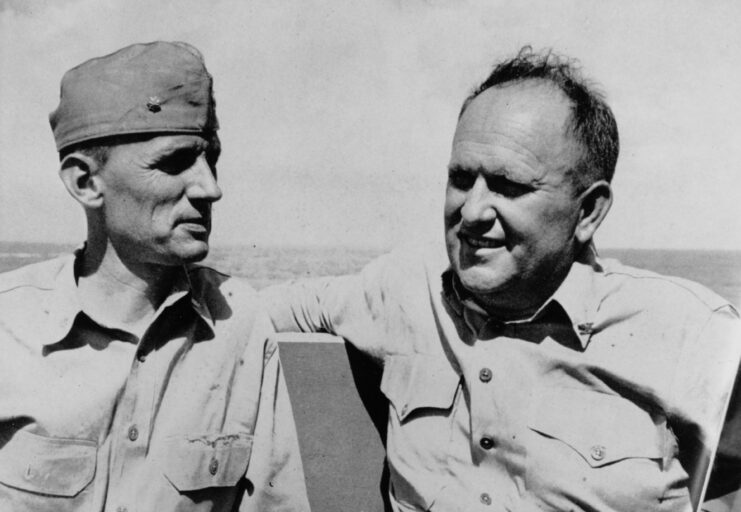
To save the ship, Ticonderoga was turned, to keep the wind from fanning the flames, while possibly disastrous areas, such as the magazines, were flooded to prevent the spread of damage. This created a 10-degree list to port.
While fighting the fires created by the first kamikaze, four more attacked the carrier. The anti-aircraft guns were able to shoot down three. The fourth, however, hit Ticonderoga on the starboard side, setting more aircraft aflame and killing or injuring another 100 men, including Capt. Dixie Kiefer.
Ticonderoga served as part of Operation Magic Carpet
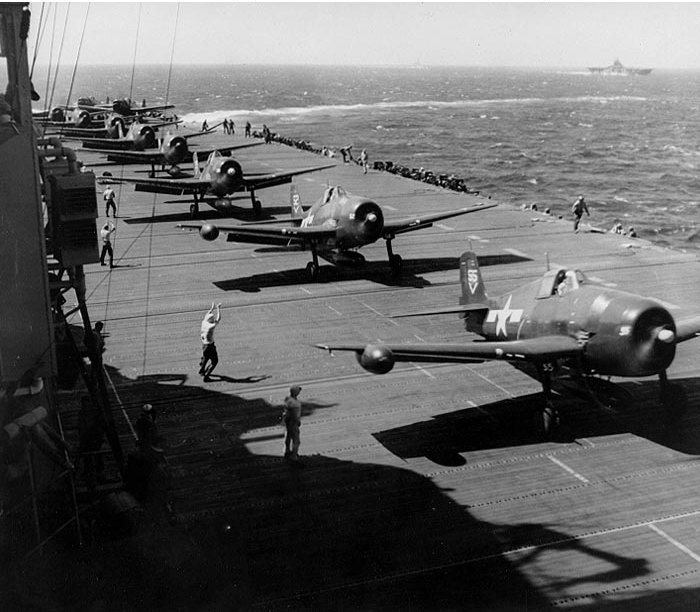
Due to the crew’s quick response, the fires were contained, allowing Ticonderoga to return to the Puget Sound Navy Yard for repairs. These were completed by April 20, and the ship departed the next day, heading back to the Pacific. After making a stop in Hawaii to pick up crew members and aircraft, she arrived at Ulithi and rejoined the Fast Carrier Task Force as part of Task Group 58.4 (TG 58.4).
Just two days after her arrival, Ticonderoga set out to participate in the final weeks of the war in Japanese home waters. During this time, aircraft from the carrier attacked enemy airfields and other targets, including Tokyo. After Japan formally surrendered aboard the USS Missouri (BB-63), Ticonderoga played a role in Operation Magic Carpet, returning American servicemen home.
USS Ticonderoga (CVA-14) returns to the fight
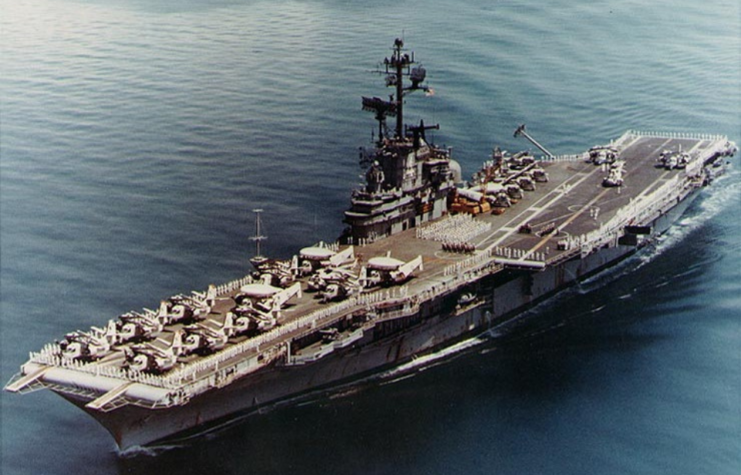
Following the end of the Second World War, the USS Ticonderoga was decommissioned and placed in the Pacific Reserve Fleet. During this time, she was upgraded for use by jet aircraft through the addition of steam catapults, updated systems and other modifications. She was also redesignated CVA-14 during this time.
On September 11, 1954, Ticonderoga was recommissioned, under the command of Capt. William A. Schoech. Back in operation, she received additional modifications, the most significant being an angled flight deck. These upgrades were finished in 1957, at which point she got underway, traveling to the waters off Japan for a six-month deployment.
Following additional peacetime deployments in the Pacific, Ticonderoga found herself involved in a second war, this time in Vietnam.
Gulf of Tonkin Incident
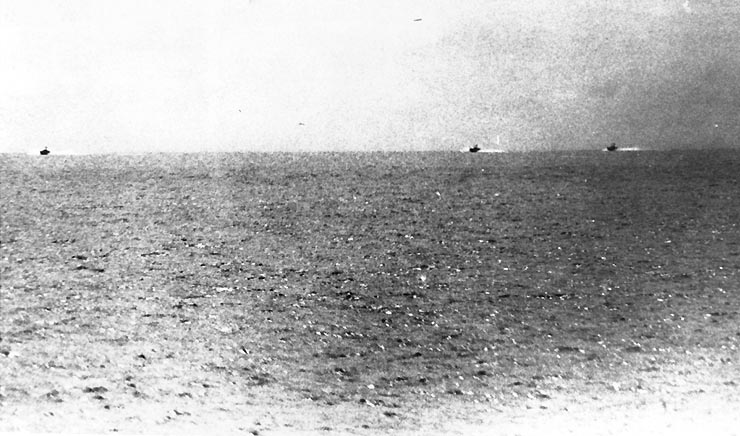
On August 2, 1964, the USS Ticonderoga became involved in the infamous Gulf of Tonkin Incident, which saw the United States become even more involved in the Vietnam War. An encounter between the US Navy and the Vietnam People’s Navy, it began after the USS Maddox (DD-731) reportedly came under attack while the American forces were conducting secret operations in North Vietnamese territorial waters.
Receiving word of the attack, Ticonderoga sent four Vought F-8E Crusaders, armed with rockets, to assist. They engaged the North Vietnamese with the rockets, as well as strafing fire. Two days later, on August 4, the aircraft carrier received a second request for aid, this time from the USS Turner Joy (DD-951). Again, Ticonderoga launched fighters, sinking two boats and damaging an additional two.
Ticonderoga continued to launch air strikes against North Vietnamese supply, logistics and communications targets between 1964-69, split between “Dixie” and “Yankee” stations. Over the course of her time in the Far East, she conducted tens of thousands of sorties.
Apollo 16 and 17
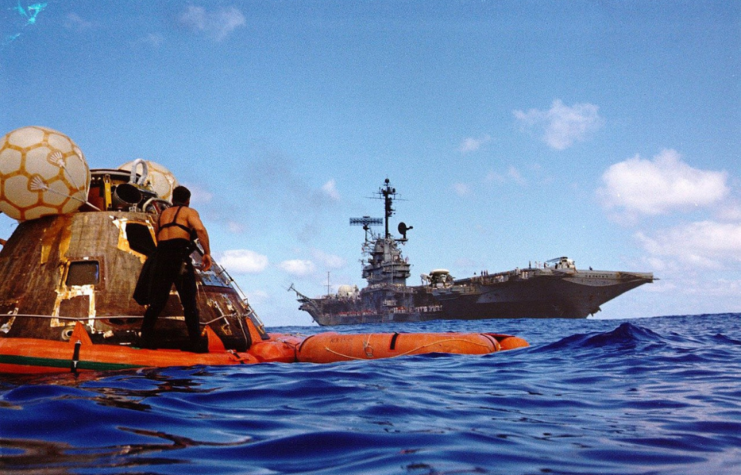
After her return from Vietnam, the USS Ticonderoga was redesignated CVS-14 and underwent conversion to an anti-submarine warfare (ASW) support carrier. She conducted training for this new role, and during the same year made a brief appearance in the film, Tora! Tora! Tora!, portraying the USS Enterprise (CV-6).
In April 1972, Ticonderoga was deployed to the eastern Pacific to recover the Apollo 16 mission capsule and its crew of three, some 215 miles from Christmas Island. The carrier did the same for the Apollo 17 mission later that year, picking up Eugene Cernan, Ronald Evans and Harrison Schmitt off the coast of American Samoa.
Are you a fan of all things ships and submarines? If so, subscribe to our Daily Warships newsletter!
Ticonderoga’s final action was on June 22, 1973, when she picked up the Skylab 2 astronauts off the coast of San Diego. The aircraft carrier remained active for a number of months after, before being decommissioned for a final time on September 1, 1973. Two years later, she was sold for scrap.
